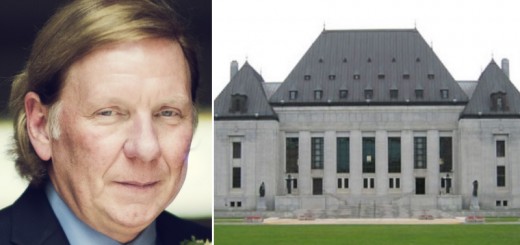Why Can’t Someone Reveal the Inner Workings of Our Supreme Court?
In order to pull my weight in solidifying the general reputation of law students as somewhat nerdish types who just…can’t…get…enough…law, I recently picked up The Nine, journalist Jeffrey Toobin’s behind the scenes look at the U.S. Supreme Court through the nineties and early 2000s. (The book was reviewed by TheCourt.ca‘s Jon Bricker back in March 2008.)
For the people who want to get the low-down on how the Court’s major opinions were shaped, this is the book for you. Toobin has talked to the justices and their clerks and sifted through the personal papers of retired judges to construct a picture of how cases such as Planned Parenthood v Casey, 505 US 833, Bush v Gore, 531 US 98, and Hamdan v Rumsfeld, 548 US 557, get decided. Toobin also takes his readers into the nomination processes and describes how the Clinton and Bush administrations settled on their picks for new justices.
While the book certainly contributes to the view that legal arguments matter less in the Supreme Court than judicial ideology, it provides a revealing look at what actually happens at the Supreme Court, which I think helps humanize the place and explain its role to the public.
Of course, I can’t help but notice that no similar book exists on the Supreme Court of Canada (“SCC”). This isn’t fair! (Hey, if I’m going to pull my weight on the nerdish law-student reputation, I’m going to go all out.) America gets two (The Brethren, a similar profile of the Burger Court co-written by Bob Woodward, being the second), but Canadians have to settle for Supreme At Last, University of Lethbridge political science professor Peter McCormick’s analysis of the number of judgments, dissents, and “who’s voting with whom” stats of the various incarnations of our top court since the 1950s.
Don’t get me wrong, I like statistics as much as the next guy, and they can be useful to a point. But I’m not that interested in being able to put together a set of SCC Baseball Cards with stat packs to trade with my friends. “You have the ’91 Sopinka card? Dude! That was the year he wrote Stinchcombe! I’ll trade you for McLachlin’s 2000 Chief Justice Rookie Card.”
No, instead we Canadians have to contend with Youtube clips of the Chief Justice’s occasional speeches to law students or TVO interviews to glean any sort of information about the Court’s inner workings. (Though I still don’t know how many justices you have to convince in order to be granted leave to appeal. Maybe they don’t even know.)
Why such a strict code of omertà? Is there a dungeon in the bowels of 301 Wellington Street that each batch of incoming clerks are shown on their tour to reinforce the message that loose lips sink ships? Or is there a more pedestrian answer — do our judges just get along with each other, meaning there isn’t anything worth reporting? Or maybe it’s just that no one has bothered to ask…
This isn’t to say that the Court should leak like a sieve. I’m not suggesting that the outgoing clerks check in with Peter Mansbridge on their way out the door for a debrief session. But it’s coming up on twelve years since the Reference re Secession of Quebec, [1998] 2 SCR 217, was decided, and twenty-two years since R v Morgentaler, [1988] 1 SCR 30. They took 15 months to decide that case! You’re telling me there’s nothing interesting to say about what went down? I find that a bit hard to believe.







Join the conversation